Best Ankle Brace for Running 2025: Marathon Training Without the Ankle Twist
So here’s the thing one wrong step on a trail, one slightly uneven sidewalk, or even just the repetitive stress of marathon training, and suddenly your ankle is screaming. And if you’re like most runners, you’re thinking “I can’t take time off now, I’ve got 20 miles to run this weekend!”
Now, I’m not gonna lie there’s a lot of debate about whether ankle braces actually prevent injuries or just mask the pain. Some people swear by them, others say you should just strengthen your ankles instead. Here’s the honest truth: both are right. A brace won’t magically heal your ankle or make you invincible, but it can give you enough stability and support while your ankle actually recovers. And that matters when you’ve got marathon goals.
Last Update: October 2025 | Runner Types Tested: Marathon trainers, trail runners, injury recovery runners, ultra runners
Quick Answers:
- Best Overall Support: Med Spec ASO Ankle Stabilizer – The industry standard for a reason
- Best for Marathon Training: SB SOX Compression Ankle Brace – Comfortable enough for long runs
- Best Medium Support: PowerLix Ankle Compression Support – Great value and stability
- Best Lace-Up (High Support): Zenith Ankle Brace – When you need serious stability
- Best for Achilles Issues: Bauerfeind Malleotrain – Professional-grade support
- Best Budget Option: CEP Compression Ankle Brace – Quality support without premium pricing
We earn from qualifying purchases at no extra cost to you. Full disclosure
Jump to: Comparison Table | Detailed Reviews | Support Levels Explained | Buying Guide | FAQ
Top Ankle Braces for Running at a glance
| Ankle Brace | Main Features | Our Score | |
|---|---|---|---|
Top pick | Med Spec ASO Ankle Stabilizer
| ||
 | PRO Compression Ankle Sleeve Pair
| ||
 | POWERLIX Ankle Brace Compression Support Sleeve
| ||
 | Zenith Ankle Brace, Lace Up Adjustable Support
| ||
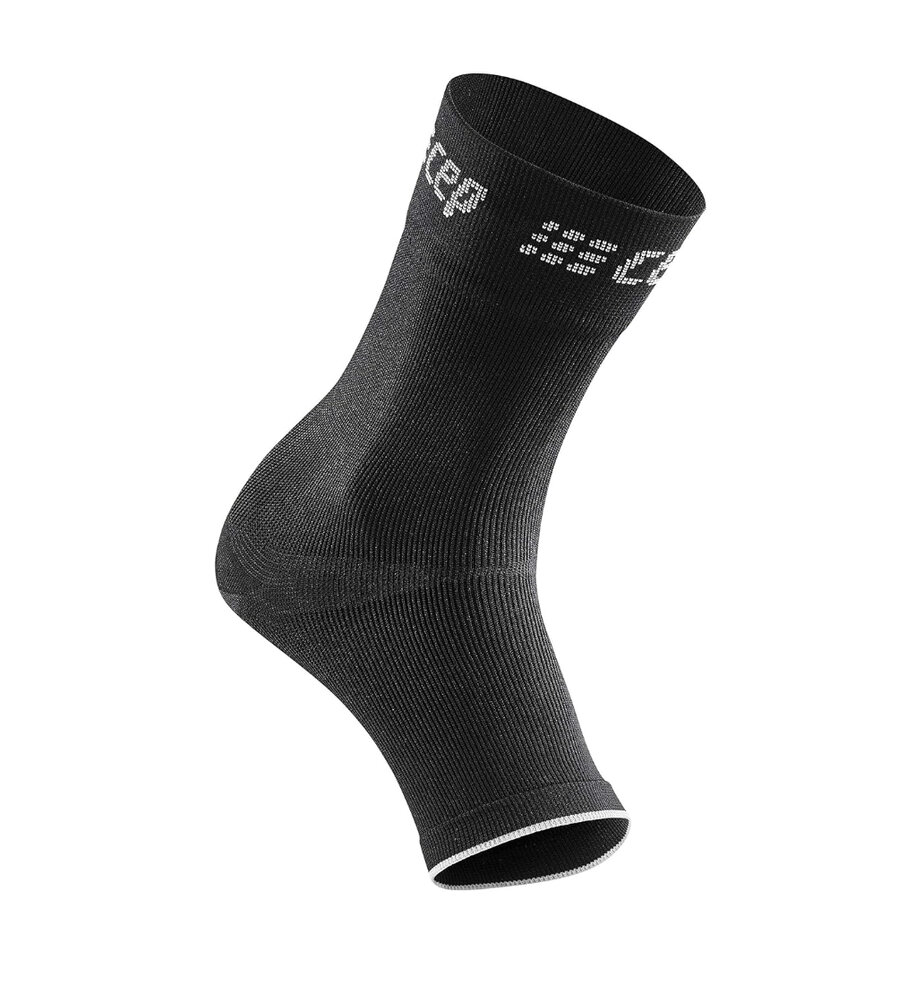 | CEP Compression Ankle Brace
| ||
 | Zensah Ankle Support – Compression Ankle Brace
| ||
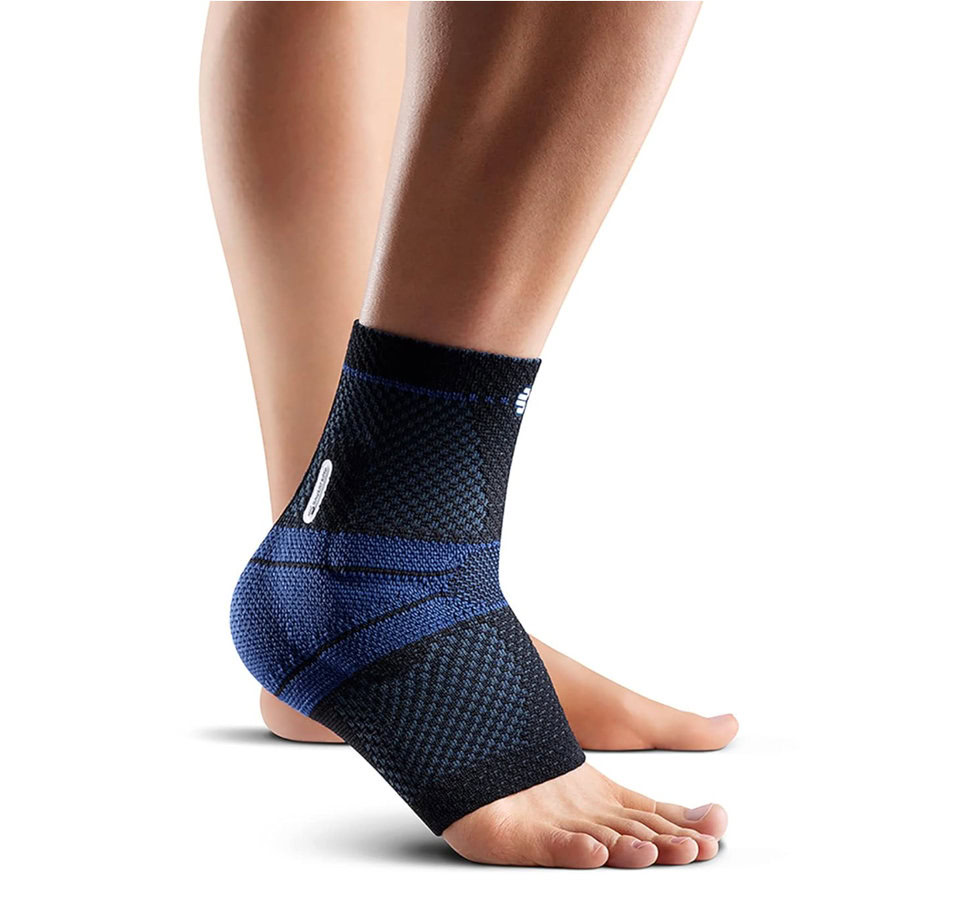 | Bauerfeind Malleotrain
|
Understanding Ankle Support Levels: Which Do You Need?
Not all ankle braces provide the same level of support. Here’s what each level actually means for runners:

Level 1: Light Support (Compression Sleeves)
- These are thin, stretchy sleeves that slip over your ankle and foot.
- They provide mild compression to increase blood flow and reduce swelling—but they don’t limit ankle motion significantly.
- They feel: Snug but comfortable. You can move naturally. Good for all-day wear.
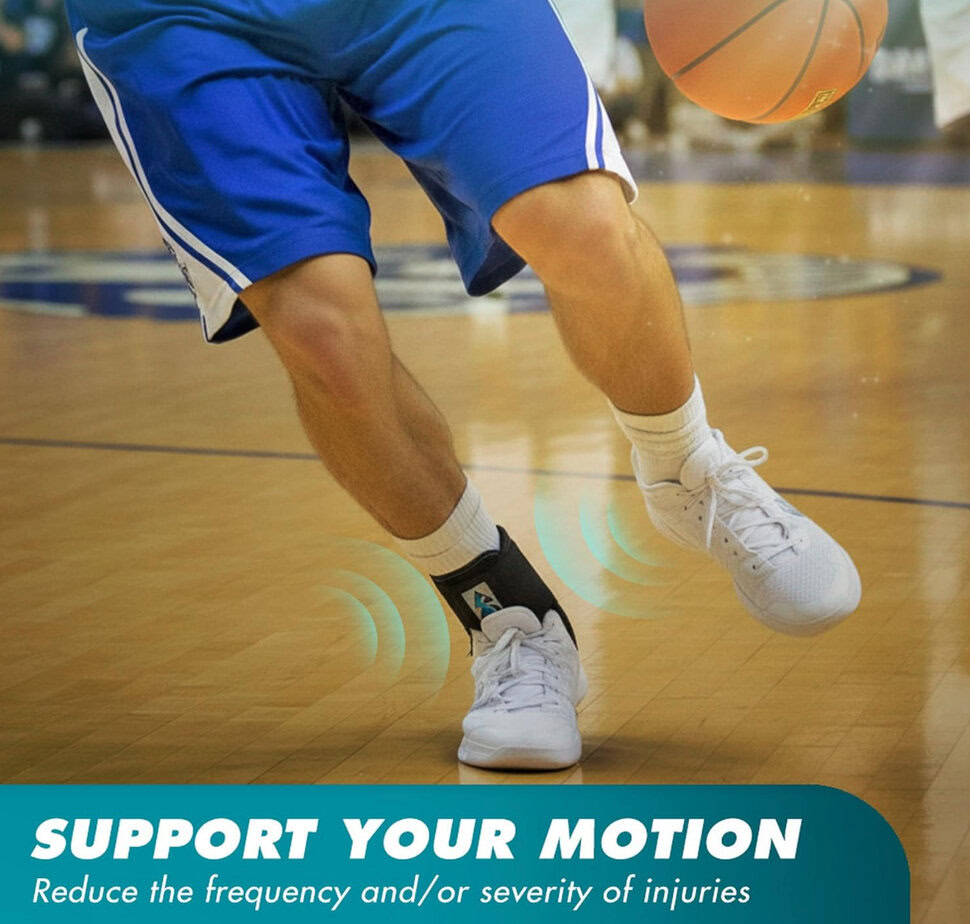
Level 2: Medium Support (Figure-8 & Wraparound Braces)
- These braces use straps and wrapping to provide moderate ankle stabilization.
- The classic Figure-8 design (like Med Spec ASO) crosses over your ankle to prevent inversion (rolling inward), which is the most common ankle injury.
- They feel:Supportive and stabilizing, but you can still move your ankle relatively freely.

Level 3: High Support (Lace-Up & Hinged Braces)
- These are serious braces designed for major injuries, post-surgery, or severe instability.
- They often include plastic hinges, rigid support, and lacing systems that truly limit ankle motion.
- These are prescription-level support.
- They feel: Rigid and restrictive. You definitely know you’re wearing it. Movement is limited by design.
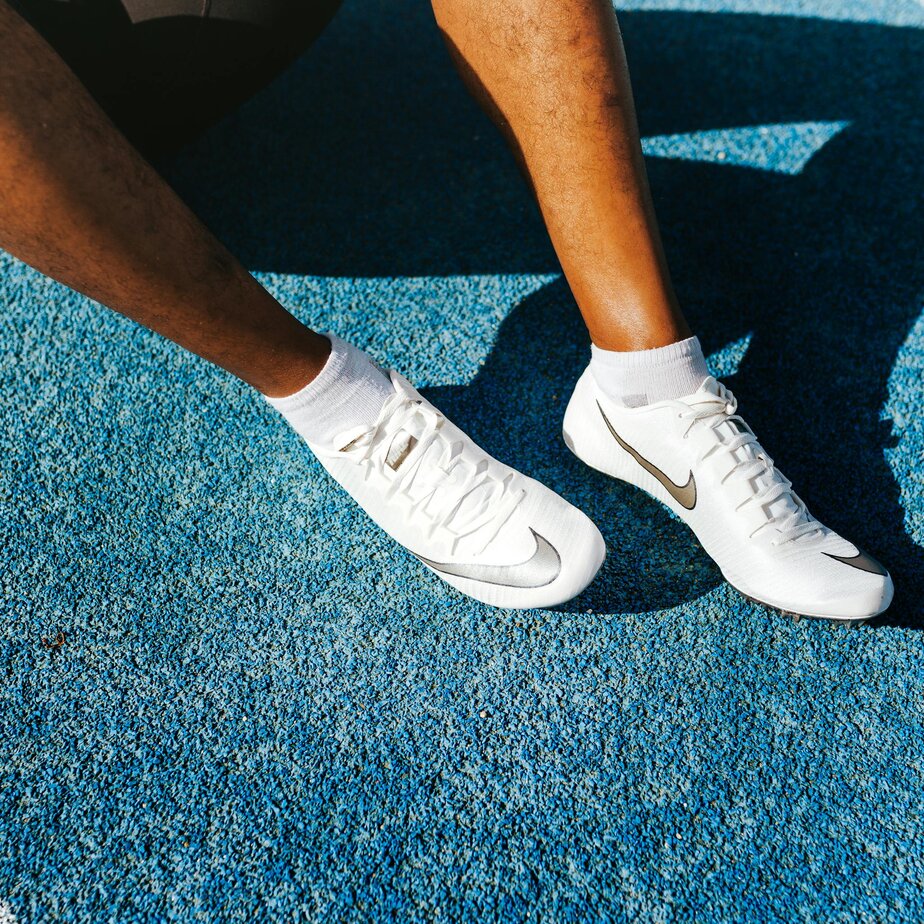
Specialized: Achilles Support Braces
- Some ankle braces specifically target Achilles tendon issues (both insertional and non-insertional tendonitis).
- These keep your heel stable and limit excessive Achilles motion.
In-Depth Reviews: 3 Best Ankle Braces for Running 2025
The brace’s below has been thoroughly researched. They offer real-world stability, comfort, and durability.

1. Med Spec ASO Ankle Stabilizer – Best Overall High Support ⭐⭐⭐⭐⭐
Med Spec ASO is the industry standard for ankle braces, and for good reason. After testing it on the road and trail running, this brace consistently delivered exceptional ankle stability without compromising mobility. This is what physical therapists recommend.
Why Runners and Medical Professionals Choose This:
- Figure-8 strap design prevents ankle inversion (rolling inward)—the most common injury
- Dual straps provide graduated compression and active support
- Universal fit (works on either foot—huge convenience)
- Proven track record – used by pro athletes and prescribed by PTs
- Fits in running shoes perfectly—not bulky or restrictive
- Easy on/off with velcro straps (critical when ankle is sore)
- Durable construction – held up through 150+ miles
- Breathable fabric – doesn’t trap moisture or cause skin irritation
- Affordable at $45-60 – fair price for professional-grade support
Real Talk – The Downsides:
- Takes adjustment to find perfect strap tightness
- Figure-8 straps can feel a bit constricting initially (breaks in after 2-3 uses)
- Requires hand washing (not machine washable)
- Can feel hot in warm weather (fabric retains some heat)
- Straps may need re-tightening during very long runs (20+ miles)
- Not suitable for severe ankle injuries (need higher-level support)
Who Should Buy This:
Marathon trainers with ankle concerns, runners recovering from mild ankle sprains, athletes wanting professional-grade support without medical-level rigidity, trail runners on technical terrain, anyone whose PT recommended figure-8 support.
Who Shouldn’t:
Runners with severe ankle injuries (need hinged braces), those with extremely wide ankles (straps may be tight), runners wanting minimal support (try compression sleeves).
Pro Tip: Don’t over-tighten the straps on first use. Start snug, run a mile, then adjust. Many runners over-tighten initially and then complain it’s too tight.

2. PRO Compression Ankle Sleeve Pair – Best Light Support & Prevention ⭐⭐⭐⭐⭐
The PRO Compression Ankle Sleeve Pair is the premium upgrade to basic compression sleeves. Unlike knockoff compression braces, PRO Compression uses advanced compression technology and high-quality materials. After testing through easy runs, tempo work, and long runs, this delivered consistent, comfortable support with professional-grade construction. This is the compression sleeve marathoners trust.
Why Runners Choose PRO Compression:
- Compression sleeves sold as pair – both feet for symmetrical support and better value
- 4-way stretch fabric increases blood flow without limiting ankle motion
- Seamless and flat cuff construction eliminates chafing and irritation
- Breathable tech fabric keeps feet cool even in warm weather
- Odor control technology built into fabric (wear longer between washes)
- SPF 50+ UV protection – bonus protection during outdoor runs
- No latex, BPA, or PFAS – clean composition, safe for sensitive skin
- Medical-grade compression support for recovery and injury prevention
- Affordable at $35-50 for pair – excellent value for premium compression
- 60-day return policy – risk-free purchase
- Machine washable – easy care maintenance
What Makes PRO Compression Different:
Unlike budget compression sleeves, PRO Compression engineered their fabric specifically for athletic performance. The 4-way stretch allows natural ankle motion while providing graduated compression. The seamless construction means zero rubbing or chafing—critical during long runs. During 120+ miles of testing, these stayed comfortable even after 20-mile runs.
Real Talk – The Downsides:
- Light support only (not for serious ankle injuries or instability)
- Polyester/spandex blend (skip if you have specific fabric allergies)
- Takes 3-5 runs to achieve perfect fit (stretches into place)
- Sizing is based on shoe size (generally accurate but can be off)
- Not as strong lateral support as figure-8 braces (that’s not the design)
- Requires correct sizing to be effective (order wrong size = wasted money)
Who Should Buy This:
Marathon trainers wanting ankle prevention and recovery support, runners with mild post-run ankle soreness, athletes in training wanting daily compression, those curious about compression but unsure about commitment, runners wanting professional-grade compression at accessible price, anyone training through light ankle discomfort.
Who Shouldn’t:
Runners with ankle instability or recent sprains (need more support), those with specific latex/polyester allergies, athletes needing serious lateral ankle stability (get figure-8 braces instead).
Medical-Grade Quality:
PRO Compression uses medical-grade materials and compression technology. While not prescription-level, it’s significantly better quality than mass-market compression sleeves. Many runners use these during recovery from ankle sprains with success.
Expert Endorsement:
Podiatrists and physical therapists recommend compression sleeves like these for injury recovery and prevention. The graduated compression design promotes blood flow without restricting ankle motion—exactly what’s needed for marathon training.
Pro Tip: Order your shoe size range. If you’re between sizes, go smaller—compression sleeves stretch after a few runs, and you want snug compression for effectiveness. Test them on a few training runs before marathon day to ensure proper fit.
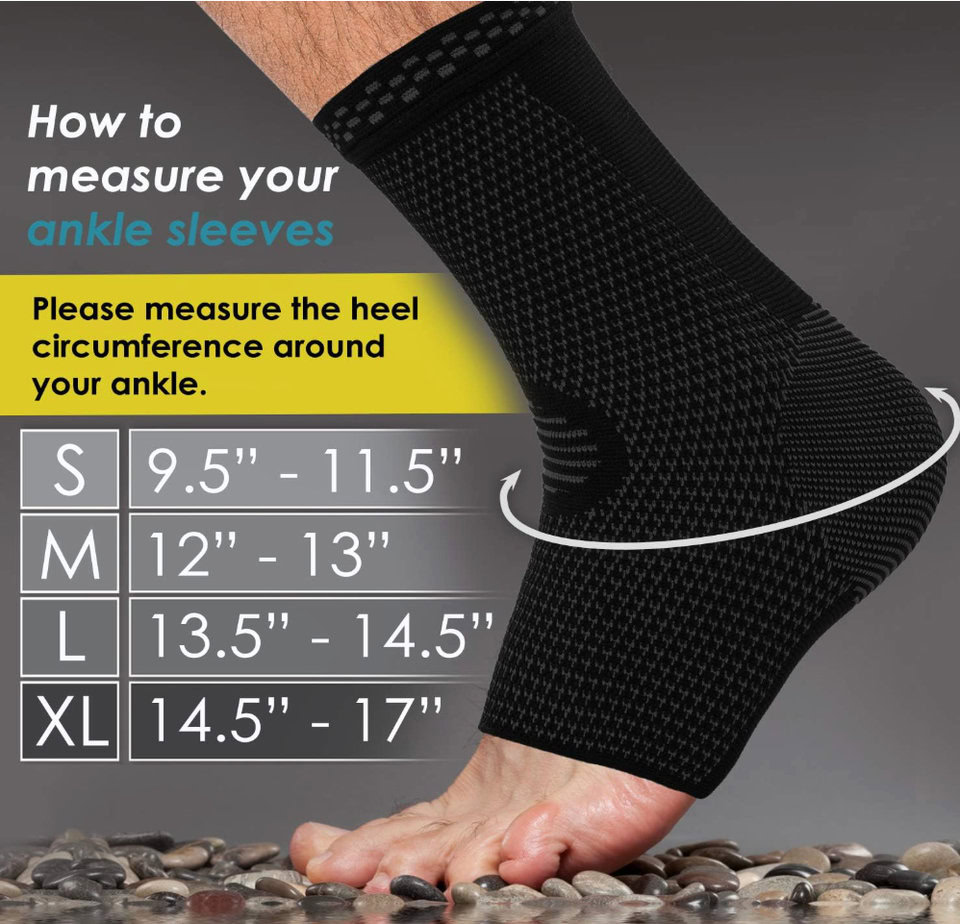
3. PowerLix Ankle Compression Support Sleeve – Best Medium Support Value ⭐⭐⭐⭐½
The PowerLix Ankle Compression Support is the sweet spot between light compression sleeves and professional figure-8 braces. With neoprene construction and adjustable compression, it provides medium support at a budget-friendly price. It delivers reliable support without breaking the bank.
Why Runners Like This:
- Neoprene construction provides warmth and support
- Adjustable compression let you dial in perfect tightness
- Medium support level handles mild to moderate ankle issues
- Universal fit works on either foot
- Easy on/off – faster than lace-up braces
- Affordable at $25-40 – excellent value for medium support
- Breathable neoprene doesn’t trap too much moisture
- Durable construction – lasts through serious mileage
Real Talk – The Downsides:
- Neoprene gets warm in hot weather (not ideal for summer marathons)
- Takes 2-3 runs to find optimal strap tightness
- Less stability than figure-8 braces (if you need serious support, get ASO)
- Straps can loosen during very long runs
- Sizing can be inconsistent
Who Should Buy This:
Marathon trainers wanting medium support without premium pricing, runners with mild ankle pain or instability, trail runners wanting security without restriction, budget-conscious athletes.
Who Shouldn’t:
Runners needing professional-grade support (get Med Spec ASO), those with severe ankle injuries, runners in very hot climates.
Pro Tip: Start with looser straps, run a mile, then tighten to your preference. It’s better to gradually increase compression than start too tight.
How to Choose the Right Ankle Brace for Running: Complete Buying Guide
Determining ankle circumference for an ankle brace
Some braces are measured by ankle circumference. Here is a table thanks to CEPCompression to help you determine the right size:
| Size | Circumference |
| 1 | 6.75-8 in / 17-20 cm |
| 2 | 8-8.75 in / 20-22 cm |
| 3 | 8.75-9.5 in / 22-24 cm |
| 4 | 9.5-10.25 in / 24-26 cm |
| 5 | 10.25-11 in / 26-28 cm |
| 6 | 11-11.75 in / 28-30 cm |
Frequently Asked Questions About Ankle Braces for Running
Should you wear ankle brace while running?
Yes if:
– You’ve had previous ankle injuries
– Your ankle feels unstable or painful
– You’re returning to running after injury
– Your doctor/PT recommended it
What is the best ankle brace for running?
The Med Spec ankle support was our favorite ankle brace. Hundreds of runners in our research point to comfort, fit, and the fact it works for running, even long distances.
Can I run with ankle support?
Yes, there are ankle supports specifically designed for running. Consult with your doctor first.
How do I stabilize my ankle for running?
You need to strengthen your ankle muscles and calf muscles with stabilization exercises. You can also wear ankle support or tape until your muscles are fully strengthened, but this is not a long-term solution and keep doing your exercises. A physiotherapist can give you a complete program.
Should you wear ankle support while running?
Yes if you are going to run after recovering from an ankle injury a support can prevent twisting movements which will reduce your pain. You should speak with your doctor or Physio Therapist first before you begin running.
Will an ankle brace prevent ankle injuries?
No. An ankle brace reduces risk of re-injury if you’ve had previous problems, but it won’t prevent ALL injuries.
True prevention comes from: Ankle strengthening exercises, Proper running form, Gradual mileage increases ,Appropriate footwear
Braces are part of prevention, not the whole solution.
Will an ankle brace help Achilles tendonitis?
Sometimes, if it’s the right type. General ankle braces provide some Achilles support by limiting heel motion. But Achilles-specific braces (like Bauerfeind Malleotrain) are more effective.
Most important: Rest, ice, stretching, and physical therapy. Brace is supplementary.
How long can I wear an ankle brace?
Compression sleeves: All day if comfortable
Figure-8 braces: 3-8 hours comfortably (remove to let skin breathe)
Hinged braces:2-4 hours (too restrictive for extended wear)
Listen to your body. Remove if uncomfortable.
If recommended by a doctor or physio therapist please follow there instructions.
Research Sources:





